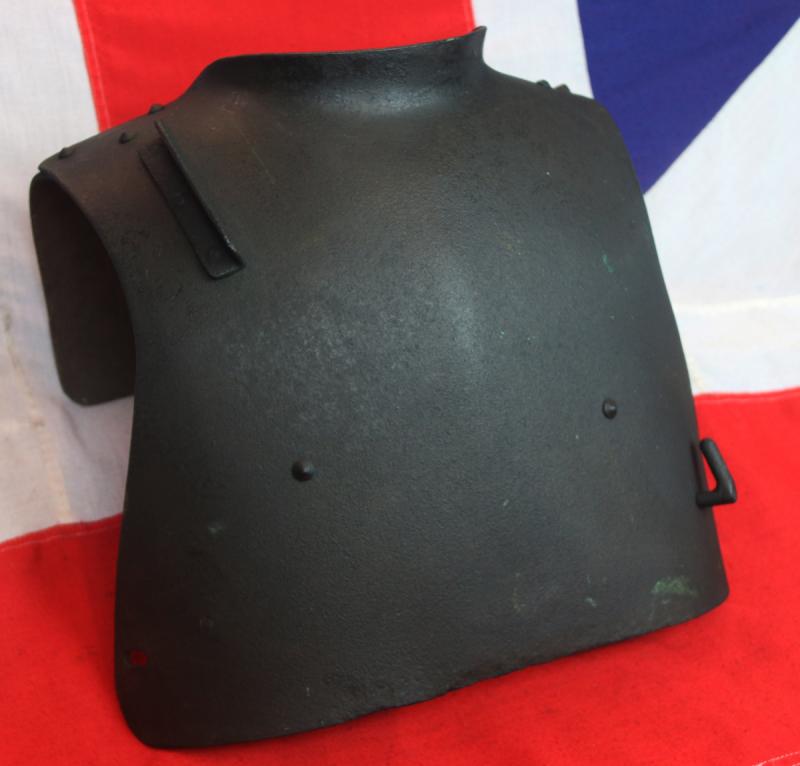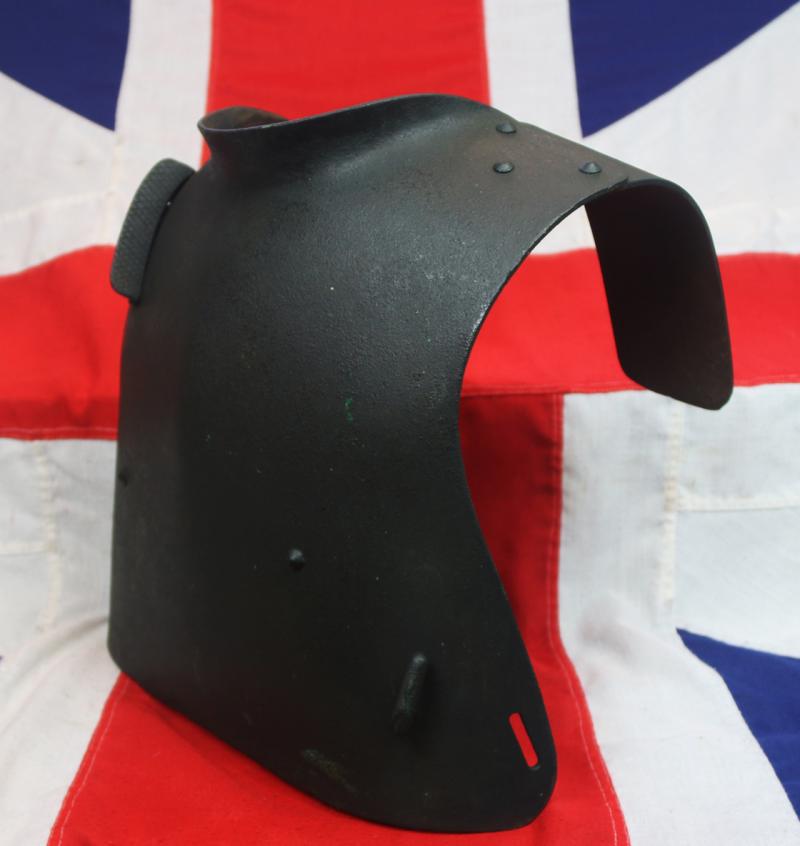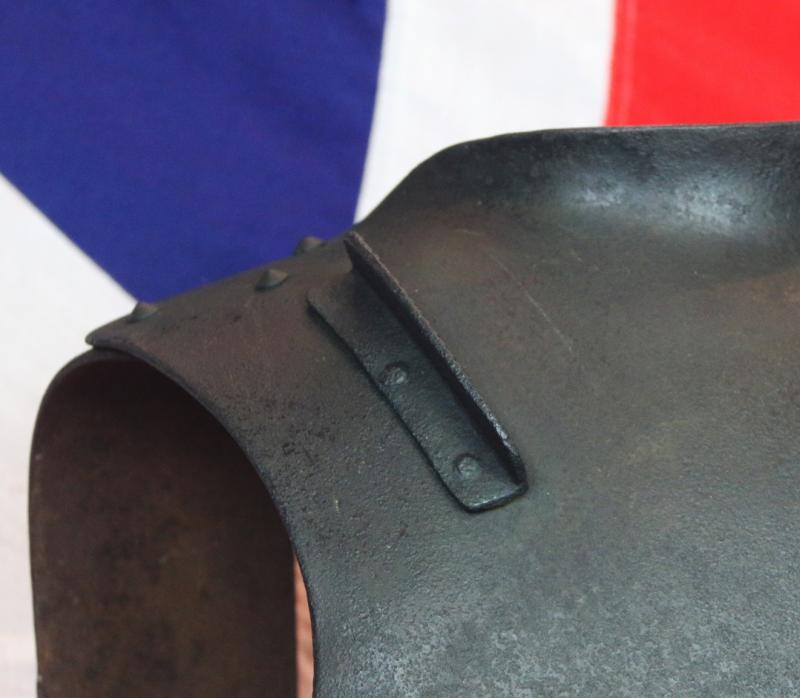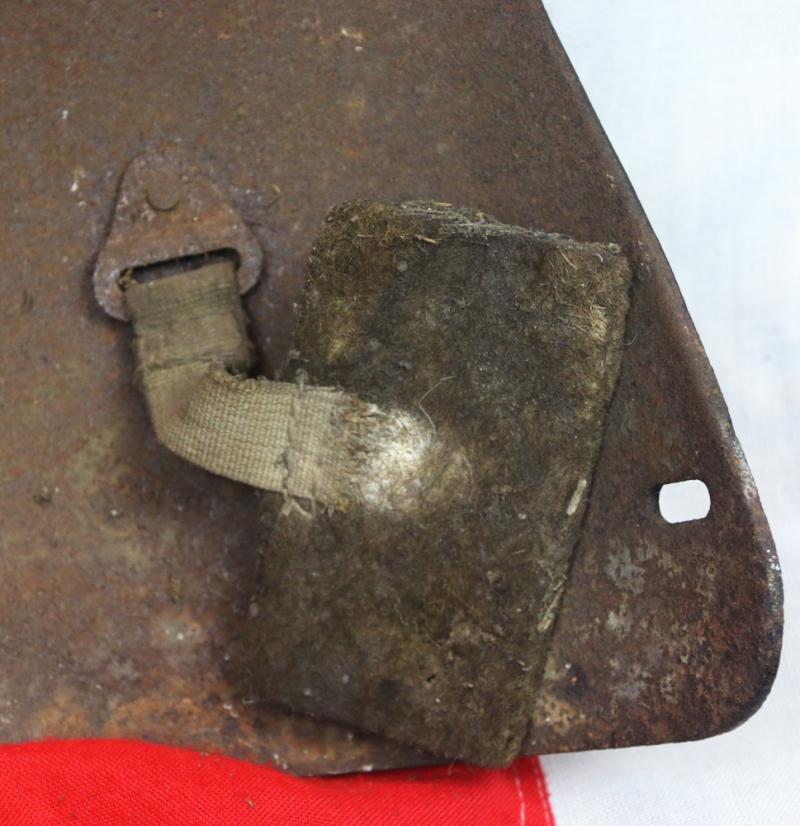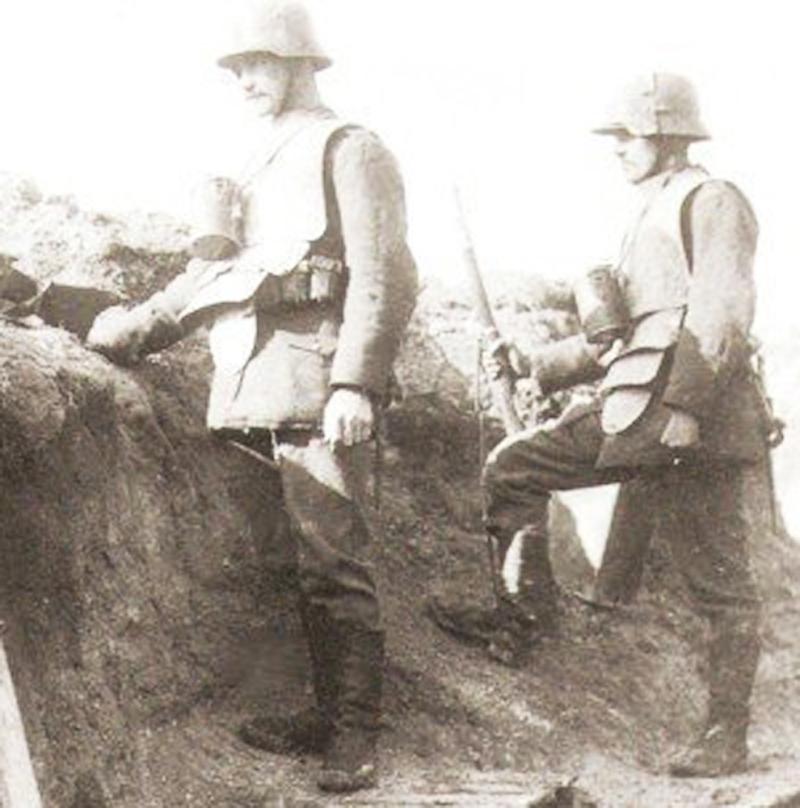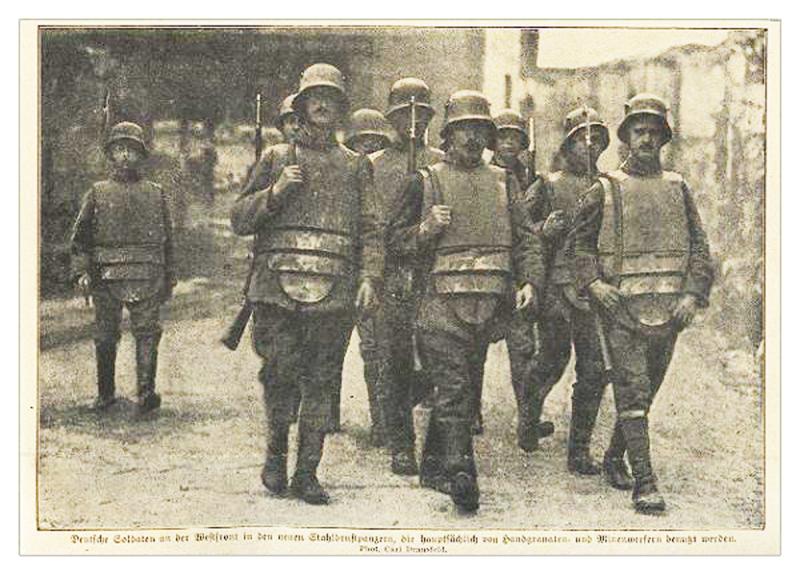A Very Scarce Original Great War WW1 German Sniper's Armour Breast And Shoulder Armour and Tasset Protector Pads, And Very Rare Sniper's Butt Stock Rest
In superb condition, this is a very scarce example and survivor of WW1 as more often than not they are in near relic condition and very pitted.
This is the first in some time in this amazing state of preservation, that we have even seen that not only had provision for the snipers butt rest in front of his right shoulder, but it is still present. It enabled the rifle to be snugly rested against the breast plate and not slip upon firing. The snipers and machine gunners armour often came with lower groin protectors, but these were optional to remove for snipers {as this one has had} for when in the prone position for sniping the lower plates would be more of a hinderence than a benefit.
Trench raids at night by both sides were a feature of the Western Front; the object being to kill the occupants of a trench and take a few prisoners who might provide information on enemy strength and intentions. The Germans formed units of Stosstruppen for this purpose. They were issued with a medieval-style breastplate and visored helmet as protection in brutal man-to-man fighting. The armour proved to be too heavy and impracticable for this purpose but was often worn by German snipers, together with a reinforced helmet. German snipers used armour-piercing bullets that allowed them to penetrate loopholes. Another means to see over the parapet was the trench periscope – in its simplest form, just a stick with two angled pieces of mirror at the top and bottom. A number of armies made use of the periscope rifle, which enabled soldiers to snipe at the enemy without exposing themselves over the parapet, although at the cost of reduced shooting accuracy.
Trench warfare proliferated when a revolution in firepower was not matched by similar advances in mobility, resulting in a grueling form of warfare in which the defender held the advantage. On the Western Front in 1914–1918, both sides constructed elaborate trench, underground, and dugout systems opposing each other along a front, protected from assault by barbed wire. The area between opposing trench lines (known as "no man's land") was fully exposed to artillery fire from both sides. Attacks, even if successful, often sustained severe casualties.
The development of armoured warfare and combined arms tactics permitted static lines to be bypassed and defeated, leading to the decline of trench warfare after the war. Following World War I, "trench warfare" became a byword for stalemate, attrition, sieges, and futility in conflict
Code: 25307

